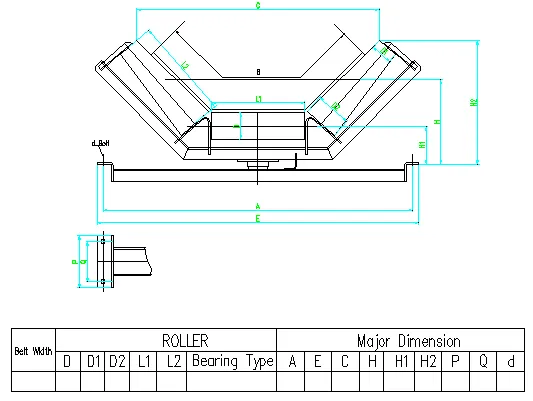 Afrikaans
Afrikaans  Albanian
Albanian  Amharic
Amharic  Arabic
Arabic  Armenian
Armenian  Azerbaijani
Azerbaijani  Basque
Basque  Belarusian
Belarusian  Bengali
Bengali  Bosnian
Bosnian  Bulgarian
Bulgarian  Catalan
Catalan  Cebuano
Cebuano  Corsican
Corsican  Croatian
Croatian  Czech
Czech  Danish
Danish  Dutch
Dutch  English
English  Esperanto
Esperanto  Estonian
Estonian  Finnish
Finnish  French
French  Frisian
Frisian  Galician
Galician  Georgian
Georgian  German
German  Greek
Greek  Gujarati
Gujarati  Haitian Creole
Haitian Creole  hausa
hausa  hawaiian
hawaiian  Hebrew
Hebrew  Hindi
Hindi  Miao
Miao  Hungarian
Hungarian  Icelandic
Icelandic  igbo
igbo  Indonesian
Indonesian  irish
irish  Italian
Italian  Japanese
Japanese  Javanese
Javanese  Kannada
Kannada  kazakh
kazakh  Khmer
Khmer  Rwandese
Rwandese  Korean
Korean  Kurdish
Kurdish  Kyrgyz
Kyrgyz  Lao
Lao  Latin
Latin  Latvian
Latvian  Lithuanian
Lithuanian  Luxembourgish
Luxembourgish  Macedonian
Macedonian  Malgashi
Malgashi  Malay
Malay  Malayalam
Malayalam  Maltese
Maltese  Maori
Maori  Marathi
Marathi  Mongolian
Mongolian  Myanmar
Myanmar  Nepali
Nepali  Norwegian
Norwegian  Norwegian
Norwegian  Occitan
Occitan  Pashto
Pashto  Persian
Persian  Polish
Polish  Portuguese
Portuguese  Punjabi
Punjabi  Romanian
Romanian  Russian
Russian  Samoan
Samoan  Scottish Gaelic
Scottish Gaelic  Serbian
Serbian  Sesotho
Sesotho  Shona
Shona  Sindhi
Sindhi  Sinhala
Sinhala  Slovak
Slovak  Slovenian
Slovenian  Somali
Somali  Spanish
Spanish  Sundanese
Sundanese  Swahili
Swahili  Swedish
Swedish  Tagalog
Tagalog  Tajik
Tajik  Tamil
Tamil  Tatar
Tatar  Telugu
Telugu  Thai
Thai  Turkish
Turkish  Turkmen
Turkmen  Ukrainian
Ukrainian  Urdu
Urdu  Uighur
Uighur  Uzbek
Uzbek  Vietnamese
Vietnamese  Welsh
Welsh  Bantu
Bantu  Yiddish
Yiddish  Yoruba
Yoruba  Zulu
Zulu Exploring the Functionality and Benefits of Snub Rollers in Engineering Applications
Understanding the Significance of the Snub Roller in Conveyor Systems
The snub roller is a critical component in the design and functionality of conveyor systems, particularly in various industrial applications like mining, manufacturing, and logistics. Often overlooked, the snub roller plays a vital role in ensuring the smooth operation and efficiency of conveyor belts.
A snub roller is a type of idler that is typically positioned near the drive pulley of a conveyor system. Its primary purpose is to increase the wrap angle of the belt around the drive pulley, which enhances friction and ensures a more efficient transfer of power from the motor to the drive pulley. This increased contact area prevents slippage and allows the conveyor to handle heavier loads or operate at higher speeds.
One of the significant advantages of incorporating snub rollers into conveyor systems is their ability to improve the overall tensioning of the belt. Proper tension is crucial for maintaining the integrity of the conveyor operation. If the belt is too loose, it can lead to slippage and misalignment, resulting in increased wear and potential system failures. Conversely, if the belt is too tight, it can lead to excessive strain on the conveyor components, ultimately shortening their lifespan.
Beyond tensioning, snub rollers also serve to guide the conveyor belt. By keeping the belt properly aligned, they prevent lateral movement, which can cause the belt to track improperly. This misalignment can lead to increased wear on both the belt and the pulleys, necessitating costly repairs or replacements. Therefore, having well-positioned snub rollers can significantly reduce maintenance costs and downtime.
snub roller

In addition to enhancing tension and alignment, snub rollers contribute to the overall flexibility of conveyor systems. They can adapt to various system designs and modifications, making them ideal for operations that may need to alter the configuration of their conveying systems periodically. This adaptability is especially beneficial in industries where the size and weight of materials being transported can change frequently.
When selecting snub rollers, several factors must be considered to ensure they meet the specific needs of the application. Material choice, size, and bearing type are all critical parameters that can affect performance. For instance, heavy-duty applications may require snub rollers made from robust materials like steel, while lighter systems may benefit from plastic designs to reduce weight and improve efficiency.
Moreover, regular maintenance and inspection of snub rollers are essential to prolong their service life. Accumulated dirt and debris can hinder their performance, leading to premature failure. Ensuring that these rollers are kept clean and lubricated is a simple yet effective means of maintaining the overall health of the conveyor system.
In conclusion, while they may not be the most glamorous components in a conveyor system, snub rollers are undeniably essential for optimal performance. They enhance belt tension, improve alignment, and increase the overall efficiency of material transport. By investing in high-quality snub rollers and prioritizing their maintenance, industries can ensure that their conveyor systems function smoothly and efficiently, ultimately leading to increased productivity and reduced operational costs. Understanding the significance of snub rollers can empower businesses to enhance their logistics and manufacturing capabilities effectively.
-
Revolutionizing Conveyor Reliability with Advanced Rubber Lagging PulleysNewsJul.22,2025
-
Powering Precision and Durability with Expert Manufacturers of Conveyor ComponentsNewsJul.22,2025
-
Optimizing Conveyor Systems with Advanced Conveyor AccessoriesNewsJul.22,2025
-
Maximize Conveyor Efficiency with Quality Conveyor Idler PulleysNewsJul.22,2025
-
Future-Proof Your Conveyor System with High-Performance Polyurethane RollerNewsJul.22,2025
-
Driving Efficiency Forward with Quality Idlers and RollersNewsJul.22,2025





























